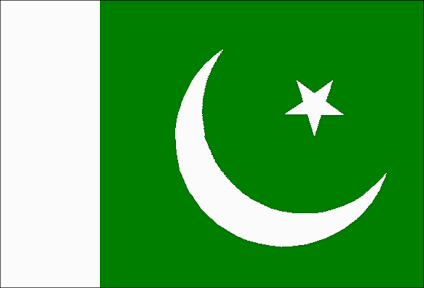





|
Kahuta is the site of the Khan Research Laboratories [KRL], Pakistan's main nuclear weapons laboratory as well as an emerging center for long-rnage missile development. The primary Pakistani fissile-material production facility is located at Kahuta, employing gas centrifuge enrichment technology to produce Highly Enriched Uranium [HEU]. This facility is not under International Atomic Energy Agency safeguards, but according the the governemnt of Pakistan the facility is physically secure and safe.
Dr. A.Q. Khan is a German-educated metallurgist who until 1975 was employed at the URENCO uranium enrichment facility in Almelo, Netherlands. A year after India's 1974 nuclear test, Dr. Khan departed URENCO with blueprints for the uranium centrifuge, and information on URENCO's key suppliers. A.Q. Khan initially worked under Pakistan Atomic Energy Commission (PAEC), headed by Munir Ahmad Khan, for a short period. But the pair fell out, and in July 1976, Bhutto gave A.Q. Khan autonomous control of the uranium enrichment project, reporting directly to the prime minister's office, which arrangement has continued since. A.Q. Khan founded the Engineering Research Laboratories (ERL) on 31 July 1976, with the exclusive task of indigenous development of Uranium Enrichment Plant. Within the next five years the target was achieved. On 01 May 1981 ERL was renamed as Dr. A.Q. Khan Research Laboratories (KRL). It was enrichment of Uranium in KRL that ultimately led to the successful detonation of Pakistan's first nuclear device on 28 May 1998.
Chinese assistance in the development of gas centrifuges at Kahuta was indicated by the presence of Chinese technicians at the facility in the early 1980s. The uranium enrichment facility began operating in 1984, but suffered serious start up problems. Kahuta began producing HEU in 1986, and Pakistan's fabrication of weapons may have begun soon thereafter, with the HEU hexafluoride being made into uranium metal which was machined into weapon pits. By the late 1980s Pakistan began advertising its nuclear potential by publishing technical articles on centrifuge design, including a 1987 article co-authored by A. Q. Khan on balancing sophisticated ultracentrifuge rotors.
Operating at full capacity, Kahuta is estimated to have the potential to produce enough weapon-grade uranium for as many as 3 to 6 weapons each year. But the gas centrifuge plant has been plagued by chronic delays. As of 1984 there were reportedly approximately 1,000 centrifuges operating at the facility. By 1991 about 3000 machines were thought to be operating with a production capacity of 30-50 kg U-235/year, enough for 2-3 implosion weapons a year.
In 1988 the US and Pakistan reached an informal understanding, which according to US officials went into effect in 1993, under which Pakistan agreed to freeze production of bomb-grade HEU indefinitely, and to refrain from enriching uranium to a level above 20% U-235. Prior to the 1998 nuclear tests, the US had reportedly obtained intelligence indicating that Pakistan had stopped production of bomb-grade uranium. However, following the tests A.Q. Khan claimed that Pakistan had never stopped making bomb-grade HEU during the 1980s and 1990s, and reportedly US officials said "we don't have enough information" to conclude that Pakistan was not making weapons-grade HEU. As of mid-1998 estimates of Pakistan's HEU inventory ranged between 100 and 500 kilograms. Assuming that Pakistan would need about 20 kilograms for a single weapon, Pakistan's stockpile might be estimated at between 5 and 25 weapons.In early 1996 it was reported that the A.Q. Khan Research Laboratory received 5,000 ring magnets, which can be used in gas centrifuges, from the China National Nuclear Corporation, a subsidiary of the China National Nuclear Corporation, a state-owned corporation. The US intelligence community believed the magnets were for special suspension bearings at the top of the centrifuge rotating cylinders. The shipment was made between late 1994 and mid-1995 and was reportedly worth $70,000. The ring magnets would allow Pakistan to effectively double its capacity to enrich uranium for nuclear weapons production. Pakistan has operated the plant only intermittently, and little information is publicly available concerning annual or total production of weapon-grade uranium at Kahuta.
The Kahuta facility has also been a participant in Pakistan's missile development program. Pakistan operates a ballistic missile research center at Kahuta along with its uranium enrichment operation. KRL has successfully developed and tested Intermediate Range Ballistic Missiles based on liquid fuel technology and its associated sub systems. Saudi Prince Sultan Bin Abdul Aziz toured the Kahuta facility in May 1999, possibly in connection with purchases of the Ghauri missiles.
KRL has also undertaken many other defense projects of national importance to enable Pakistan to become self-reliant in various sophisticated weapon systems and to save valuable foreign exchange. These projects include:
